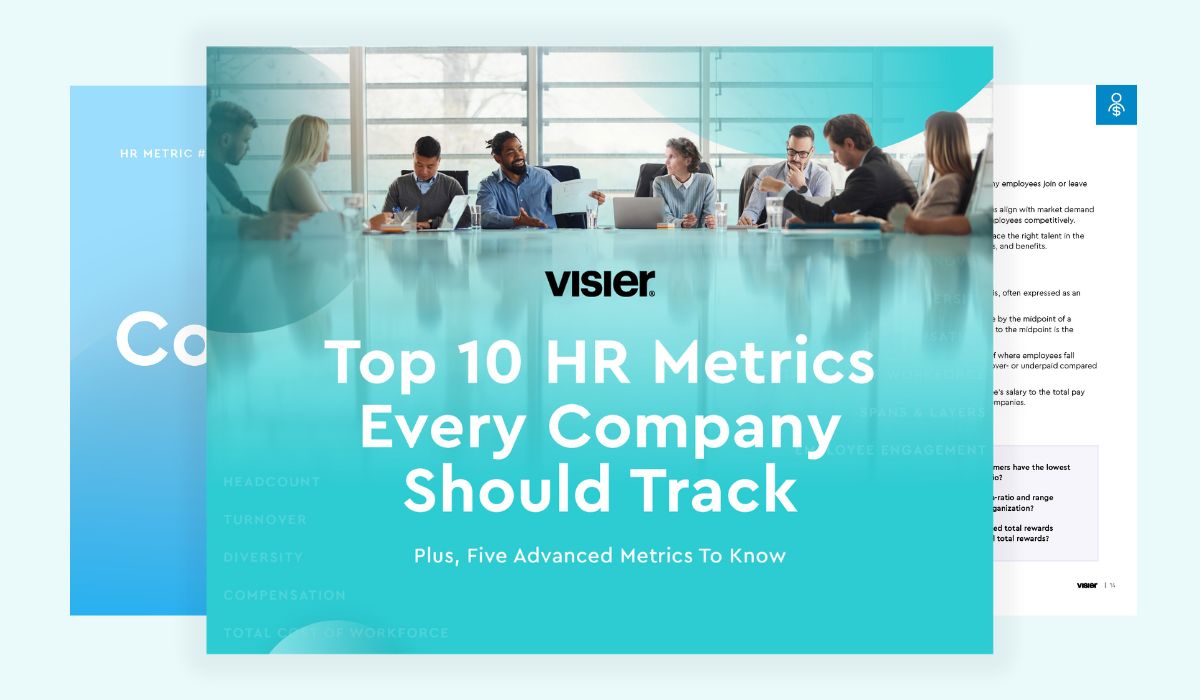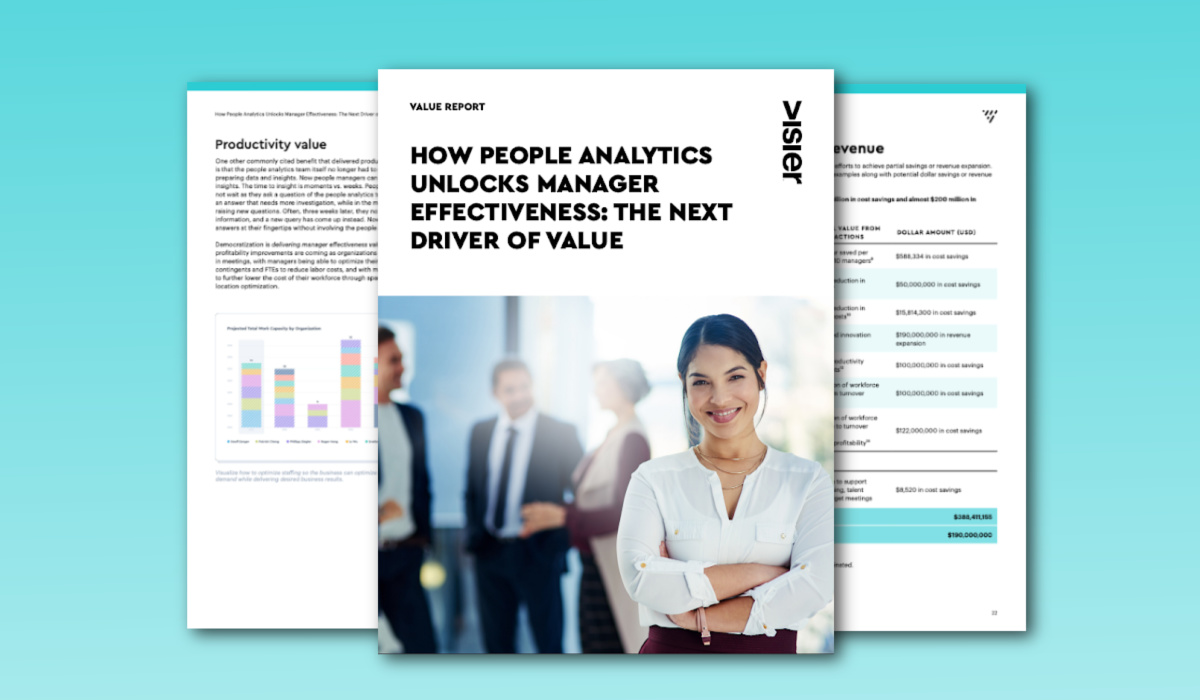
Table of contents
What is time to hire?Why time to hire is important for HR organizationsWhat’s a good time to hire?How to calculate time to hireHow to improve time to hireHow Visier helps track, understand, and improve time to hireHiring someone new can be a complicated and costly process. You need to find the best candidates as quickly as possible, with minimal disruption to the existing teams. Time to hire is an important metric that can shine a light on the efficiency of your talent acquisition process. Here’s everything you need to know about it.
What is time to hire?
Time to hire is a recruitment metric that tracks the number of days between the moment a candidate applies for a job and the moment they accept the offer.
This common HR metric gives you insights into two main aspects of your talent acquisition process: recruitment efficiency and candidate experience.
A shorter time to higher means your recruitment process is more efficient. You navigate the steps from the initial phone call to interviews, and the offer easily. A longer time to hire, on the other hand, means the recruitment process has a lot of unnecessary bottlenecks.
A shorter time to hire also means a good candidate experience. Nobody likes to spend months on end going to interview upon interview. This can cause disinterest or resentment amongst candidates, and make it much harder to snatch up top talent before a faster competitor does. A quick, clear process, where each step is highlighted from the start will contribute to a better candidate experience.
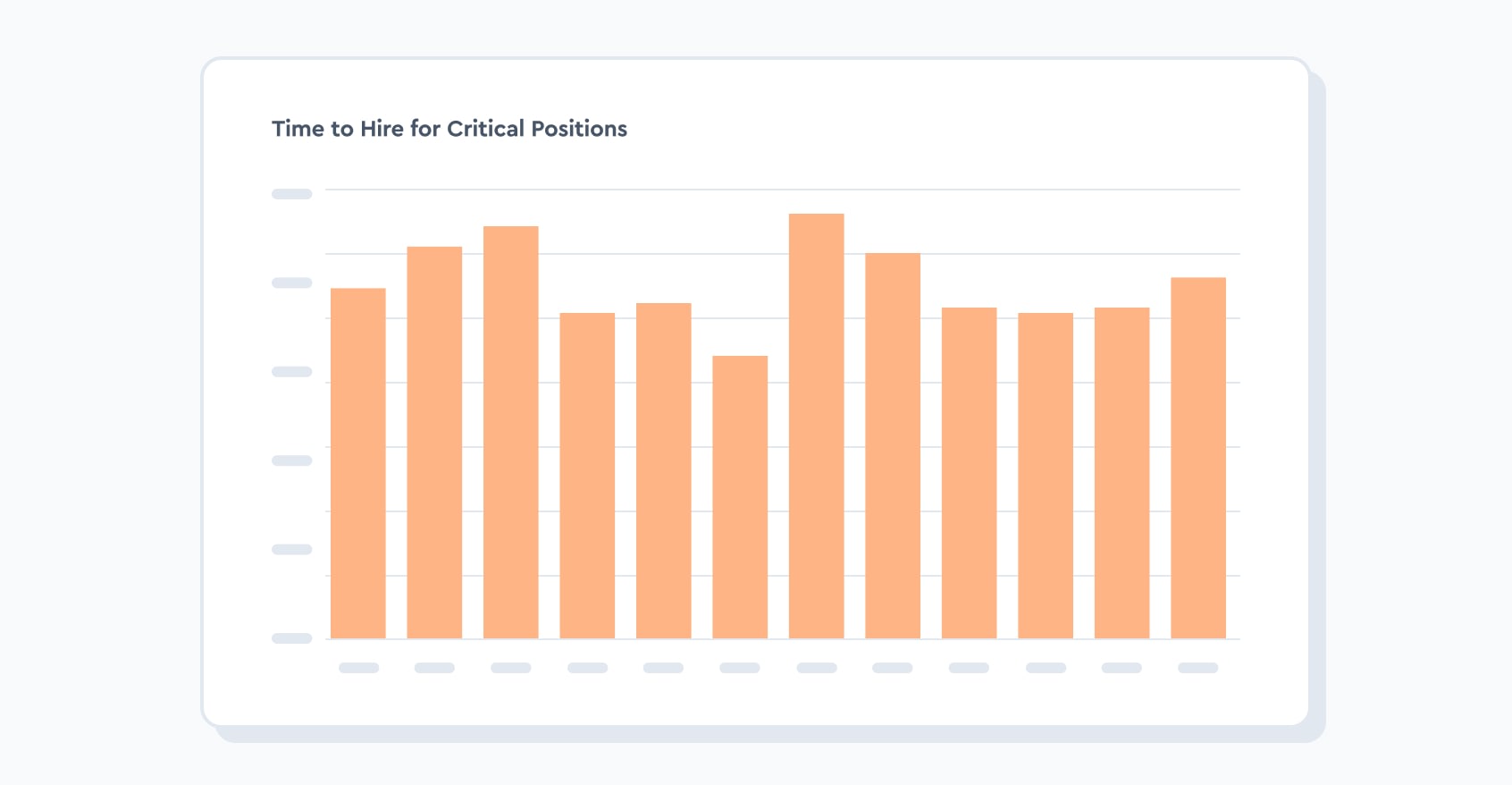
View Time to Hire for Critical Positions to make strategic hiring and workforce planning decisions.
Time to hire vs. time to fill: what’s the difference?
Time to hire looks strictly at the time lapsed from the moment the candidate applies to a job until they accept the offer. It’s solely focussed on the internal recruitment process.
Time to fill looks at the wider process, measuring the time from the moment a new position is approved within the company until a candidate accepts the offer. This metric includes other factors and external variables that might be outside of your company’s control, such as how long it takes to create and post a job ad, and how long until you have an adequate candidate slate to begin interviewing.
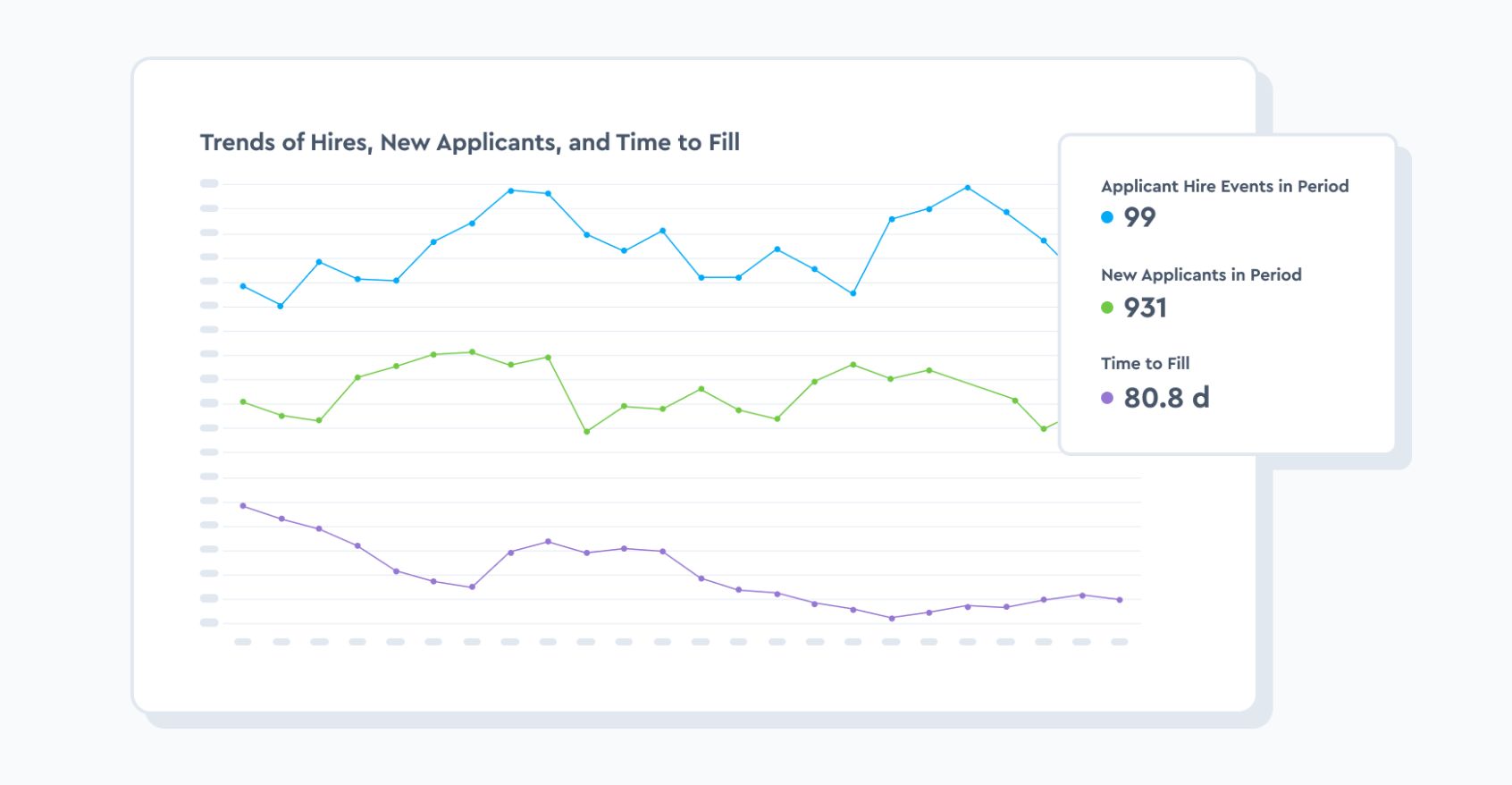
Use people analytics to compare new applicants, hires, and time to fill.
Why time to hire is important for HR organizations
Time to hire can impact many processes within your company. Recruitment can be a costly process. It takes money and resources to look for the best candidate. Plus, the longer a position stays empty, the more money you can lose through lost productivity and potential.
But the time to hire is more than just income. The recruitment process is the candidate’s first interaction with the company. If the process is tedious, with a lot of unexpected and unnecessary bottlenecks, the candidate’s experience will be negative.
They’ll be less likely to accept your offer and might instead go with your competition if they have a better recruitment process. A 2023 Robert Half survey showed that 83% of hiring managers missed a good hire during the past year and 29% of them attribute that loss to a long time to hire.
A shorter time to hire can also mean an improved time to productivity. Training influences the latter, but you can’t start thinking of training until you hire someone, so the two metrics go hand in hand.
What’s a good time to hire?
Time to hire can vary according to industry and role. The reported average in 2023 was 44 days. Most companies consider that average to be too long, especially since it seems to be increasing from previous years.
Departments with a need for highly specialized skills can take an even longer time to hire. For instance, in 2022, Energy & Defense companies reported needing 67 days on average to hire a new person and they expected those numbers to grow in the following years.
According to the same reports, Tech & Media companies had the shortest time to hire last year, averaging 20 days.
What do these statistics show us? On one hand, the hiring process seems to be getting more and more complex. Instead of finding ways to improve their time to hire, many companies seem to be extending it, even though they agree that’s not always a good thing.
On the other hand, the variances between industries are a clear indicator that sometimes a longer time to hire is necessary—especially if we’re talking about specialized roles. In these cases, it’s preferable to spend longer on the hiring phase and make sure you’re choosing the absolute best candidate.
Rushing the process might make your initial statistics look good, but if you make the wrong choice, it will backfire sooner than you’d expect. Time to hire is a critical metric, but not the only one to use when measuring the success of your talent acquisition program. Often, prioritizing quality over quantity is better.

How to calculate time to hire
Calculating the time to hire will usually fall into the hands of your HR team. To do that, you need to know three simple things:
When you posted the job ad
When the candidate applied
When they accepted the offer
For example, you post a job ad on March 2nd. The candidate applies on March 19th and accepts the offer on April 4th. Your time to hire—the number of days between March 19th and April 4th—is 16 days.
If you want a better understanding of your process, you can choose to take it a step further and calculate the average time to hire in your organization, looking at all the candidates hired over a certain period.
Let’s say you want the average time to hire for the past quarter. You hired 5 people during this time. The time to hire for each was:
Person 1—16 days
Person 2—21 days
Person 3—15 days
Person 4—30 days
Person 5—28 days
The average time to hire will be 22 days.
To manually calculate time to hire, you need to use a formula.
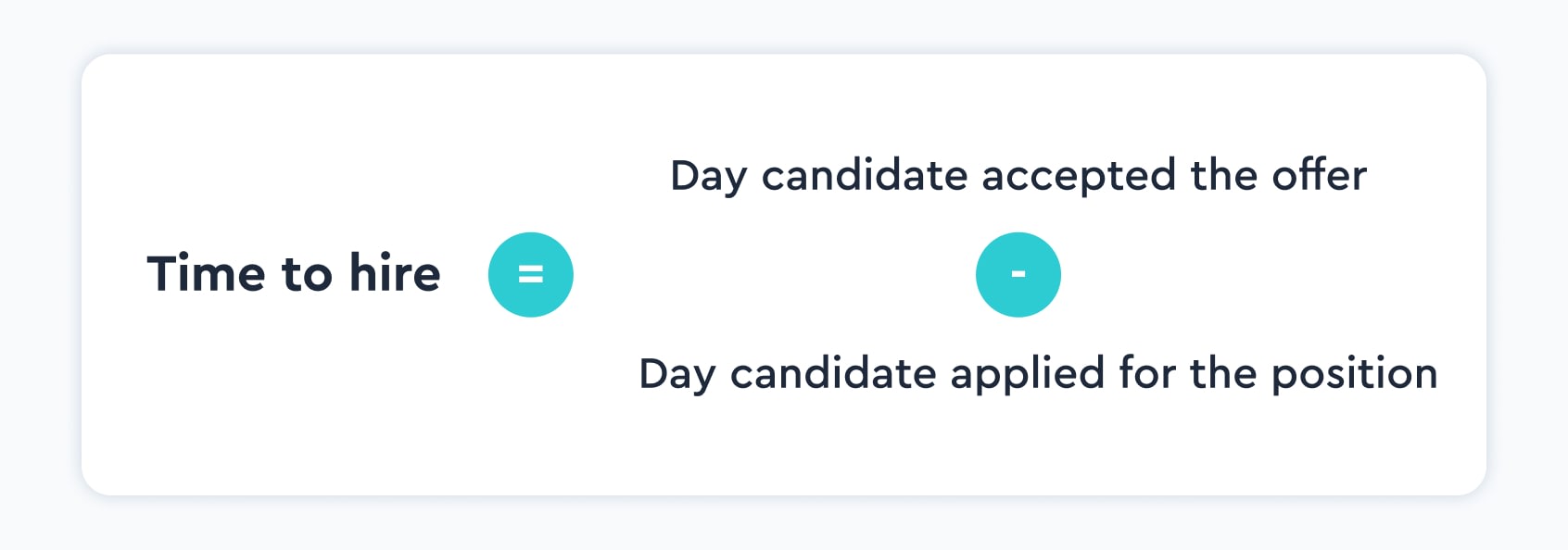
How to improve time to hire
An efficient hiring process means more productivity and a better experience for candidates. Let’s take a look at a few simple ways to improve your time to hire.
1. Define each step of the hiring process
A well-defined hiring process is the first step to a shorter time to hire. You need to know what happens from the moment a candidate submits their resume until you make the offer.
How many interviews will there be?
Who is responsible for each assessment?
What are the expected results for each assessment for a candidate to go to the next step?
HR will be responsible for most of the hiring process, but other people might also be involved. Be sure to coordinate with them. Discuss all the steps of the process, even if they’re only involved in one of them.
2. Establish the desired time per hire
Now that you know each step in your hiring process, you can estimate how long it will take under ideal conditions. Be realistic and take into consideration different hiring teams.
Don’t forget that different positions might require different times to hire. A highly specialized job could require more technical interviews, for instance, which will take more time.
3. Improve your employer brand
Most candidates will visit your website or your social media before applying for a job. Use this to your advantage. Make sure your Career page and other related messages clearly describe your company’s values and culture.
Your employer branding also speaks a lot about your employer reputation and the employee value proposition. A clear message will attract the right candidates from the start. This improves your time to hire and reduces the risk of people dropping out in the middle of the hiring phase or rejecting your offer.
4. Use pre-assessment tools
Pre-assessment tools are a great way to speed up the hiring process and filter out people who wouldn’t make it past a certain point. These can be cognitive ability tests, behavioral interviews, and more.
Depending on the position, looking at a person’s portfolio can also be a great way to see if they truly have the skills and the experience you are looking for.
How Visier helps track, understand, and improve time to hire
Understanding time to hire is crucial for HR leaders as it directly impacts recruitment efficiency, candidate experience, and overall organizational productivity. By tracking time to hire, HR leaders can identify bottlenecks in the hiring process, optimize recruitment strategies, and enhance the overall effectiveness of talent acquisition efforts. Understanding time to hire also allows organizations to set realistic expectations for candidates, ensuring a positive experience throughout the recruitment journey.
Tracking time to hire on its own is the starting point. HR leaders can use people analytics to gain deeper insights into time to hire and its impact on recruitment, onboarding, and more. With people analytics, users can analyze data from recruitment platforms, applicant tracking systems, and HR databases in one platform to identify patterns, trends, and areas for improvement in the hiring process, enabling HR leaders to make data-driven decisions that drive business outcomes.
With Visier, you can compare time to hire with other metrics to understand the impact to the business. Rather than analyzing static dashboards and reports, you can adjust the filter to look at time to hire over the last 30 days, see how you're tracking for the quarter, or view the year-over-year (YoY) trend to make informed, swift decisions. For faster analysis, ask Vee, Visier's generative AI digital assistant, about your organization's time to hire for insights in seconds.
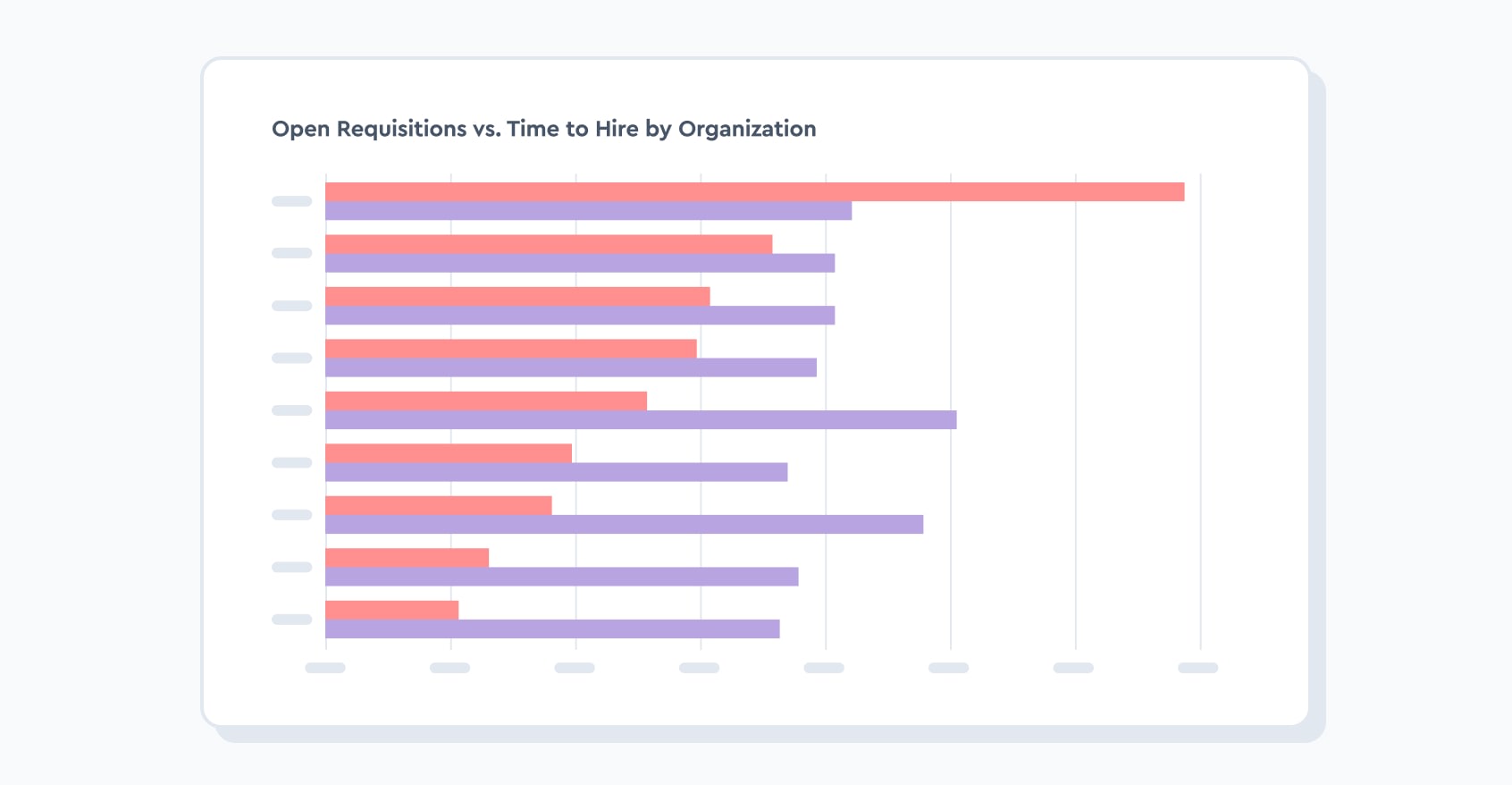
Compare Open Requisitions and Time to Hire by department to for a more granular view.

